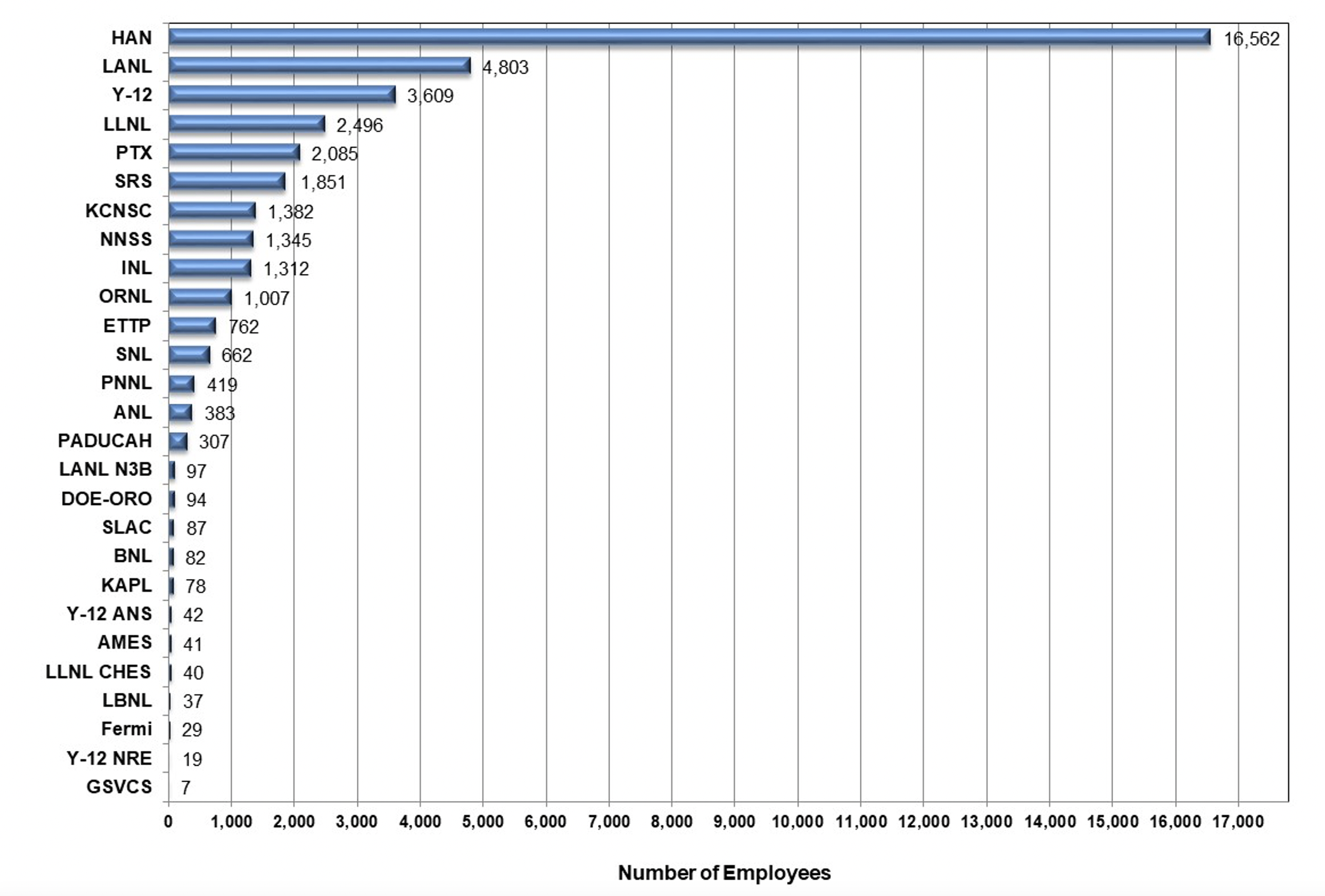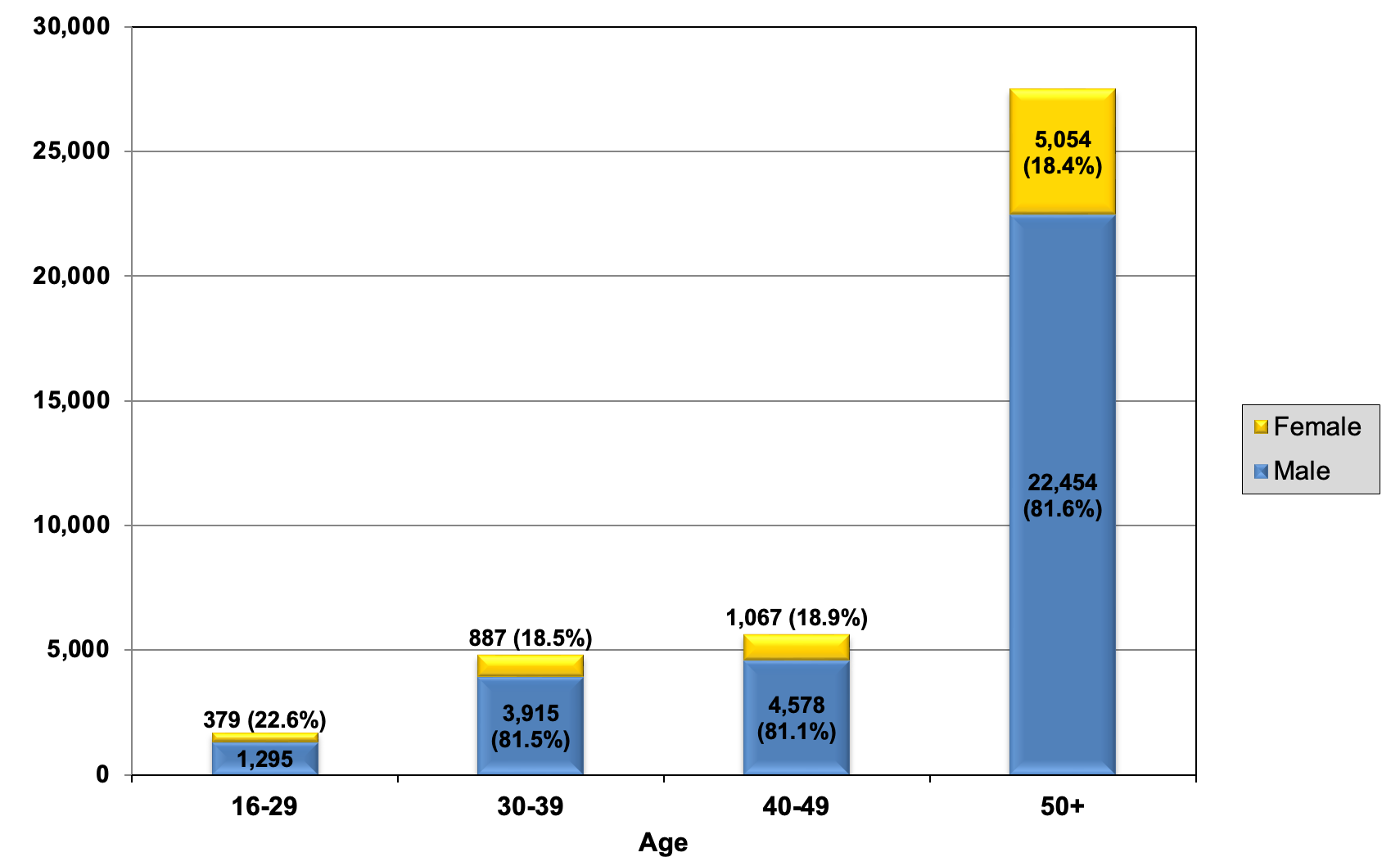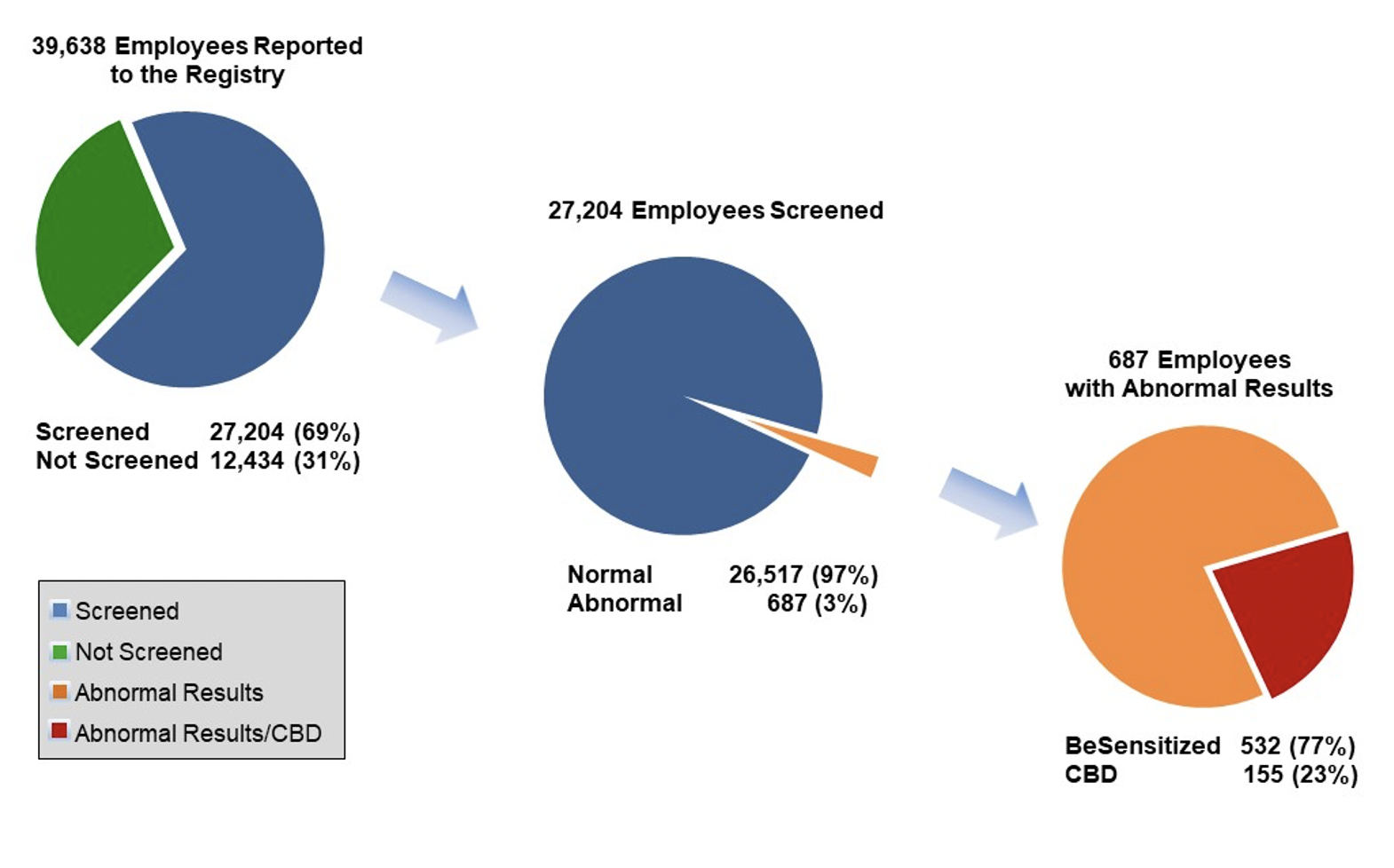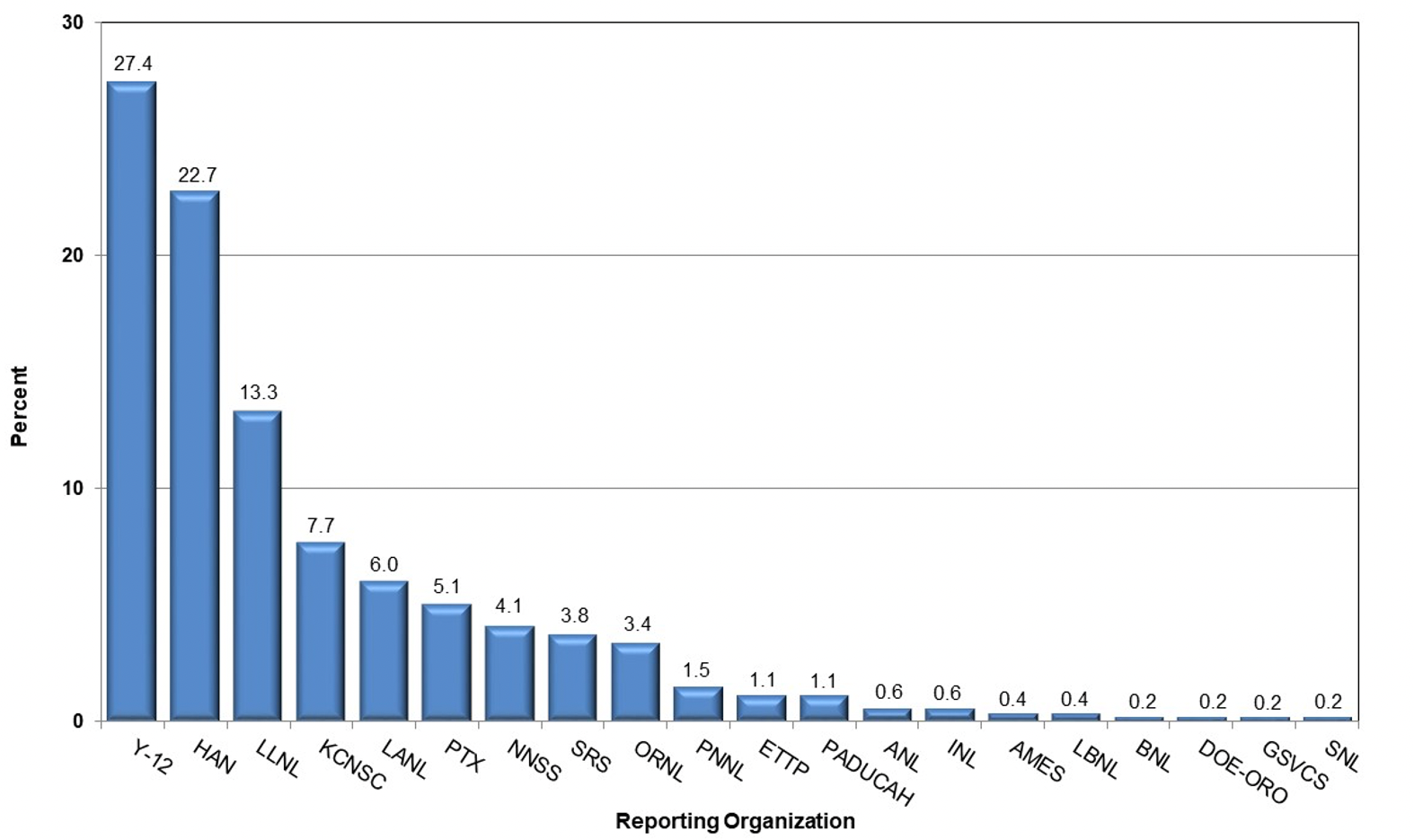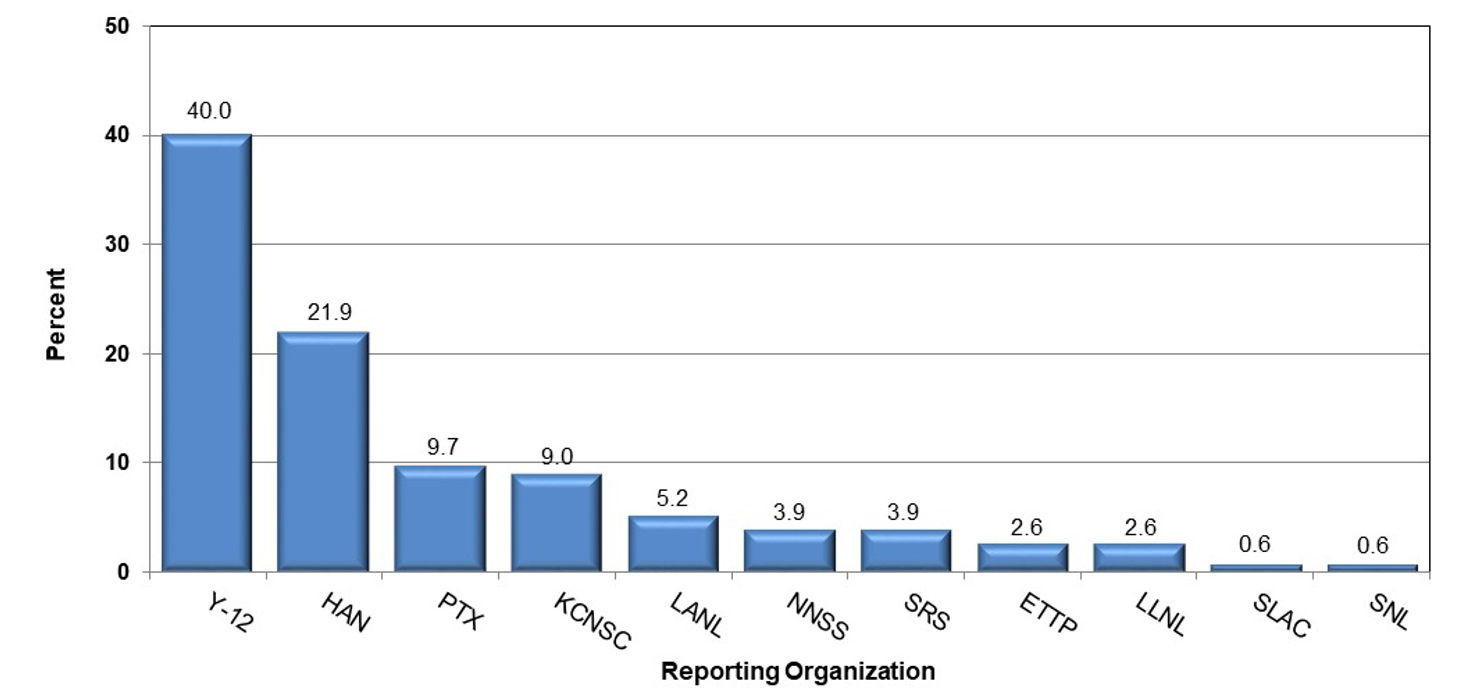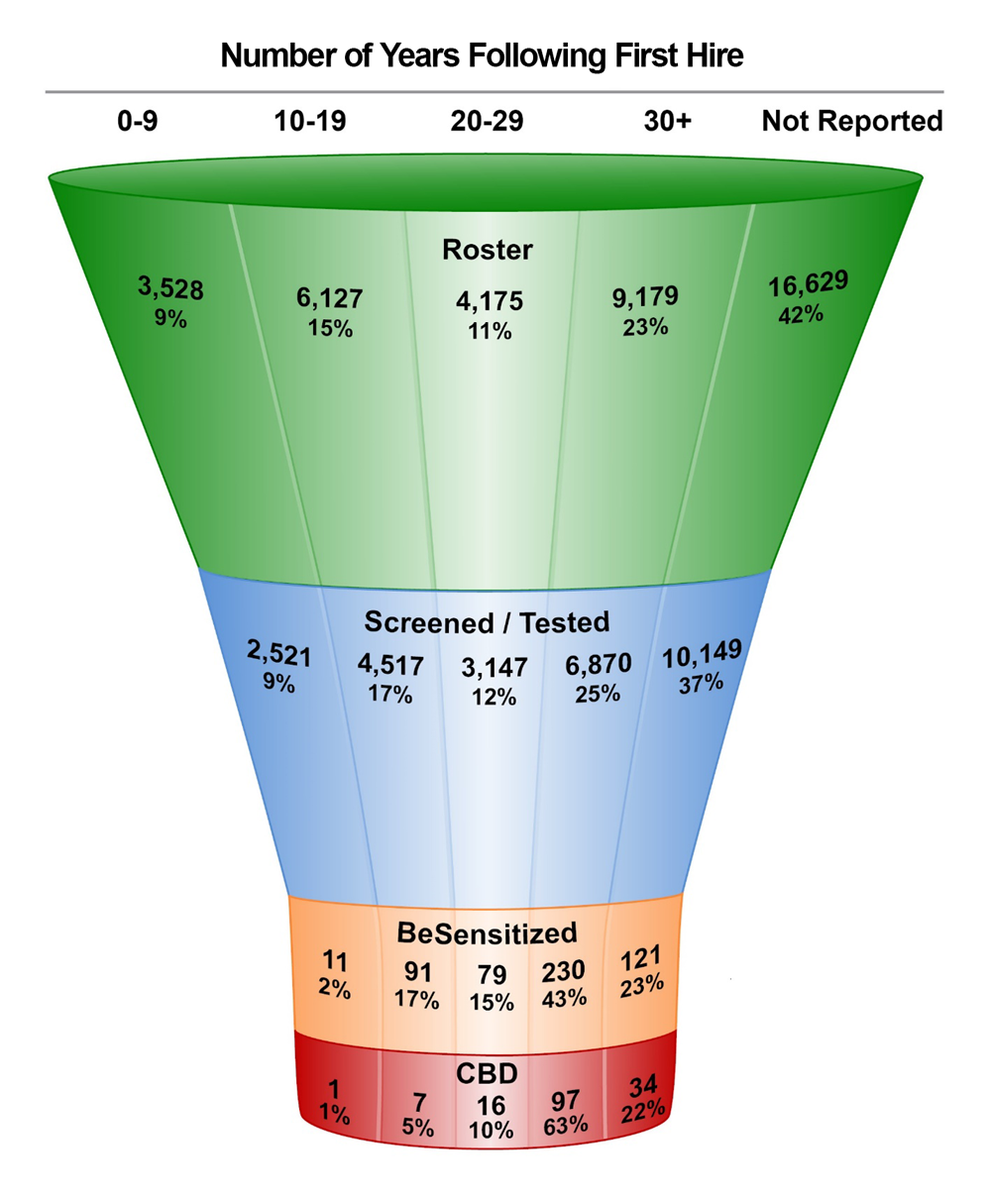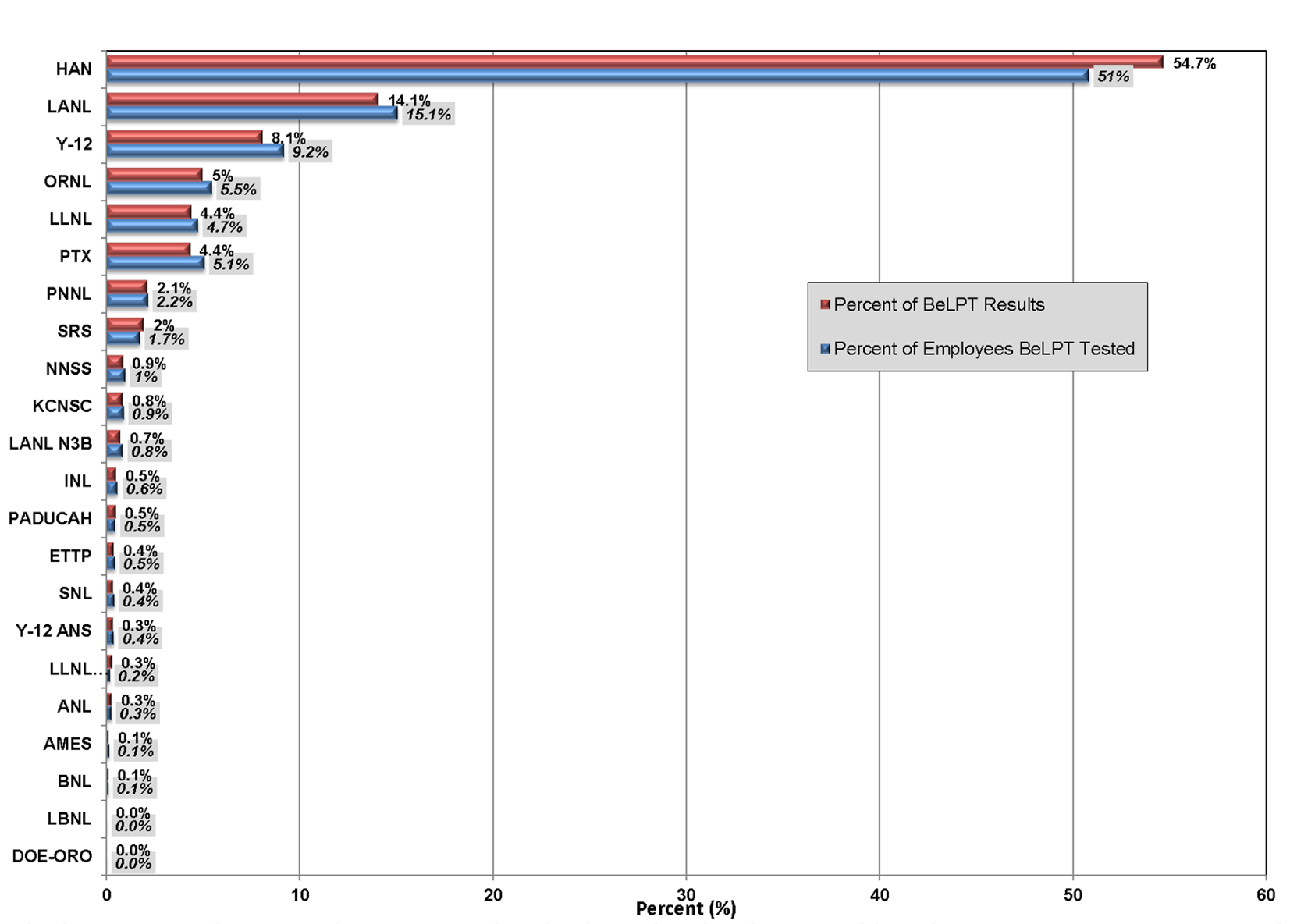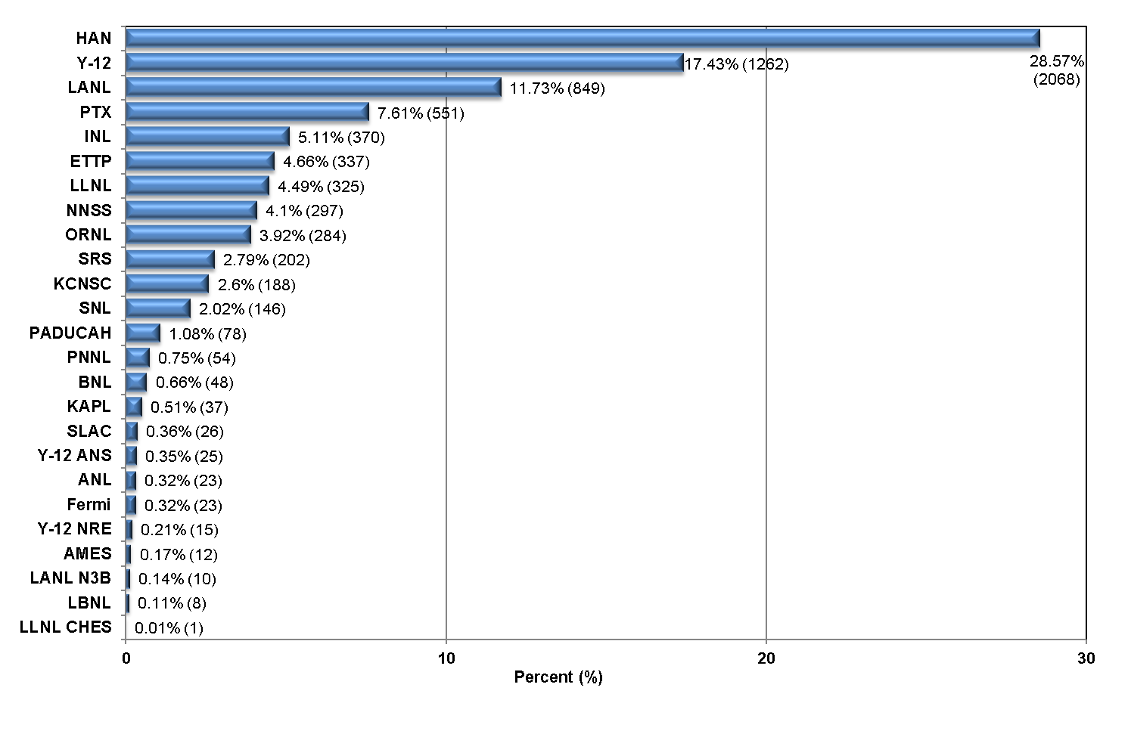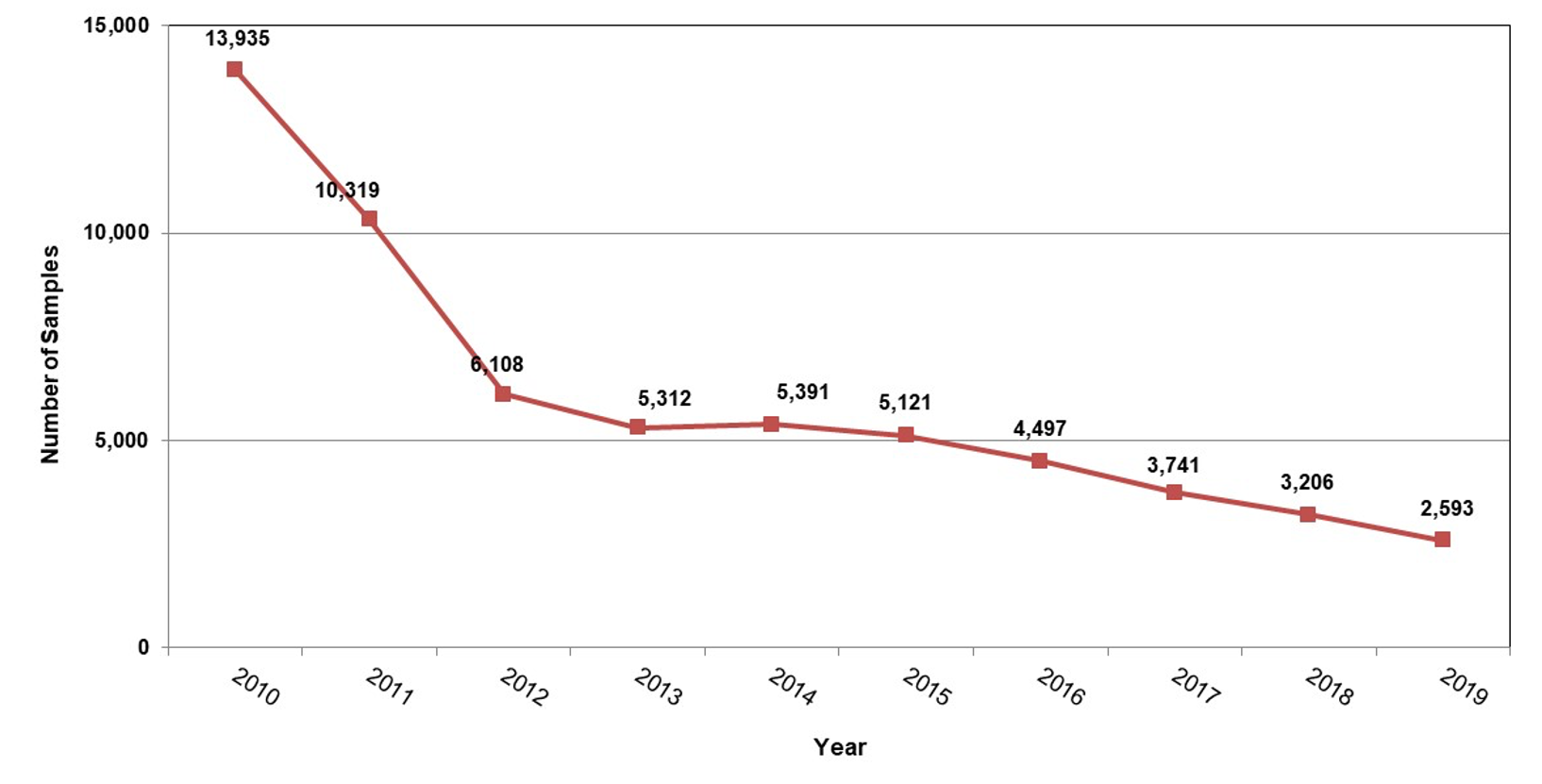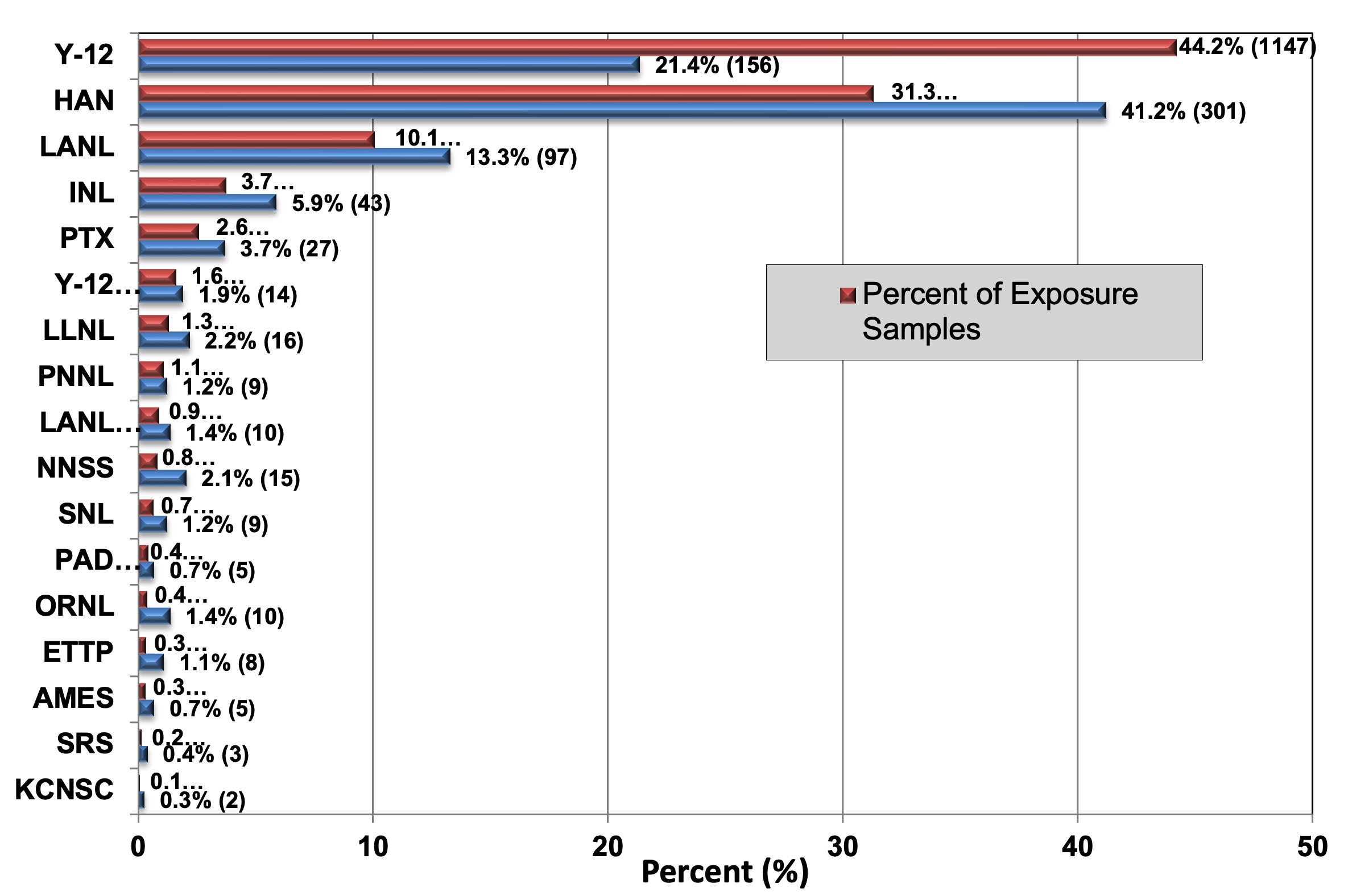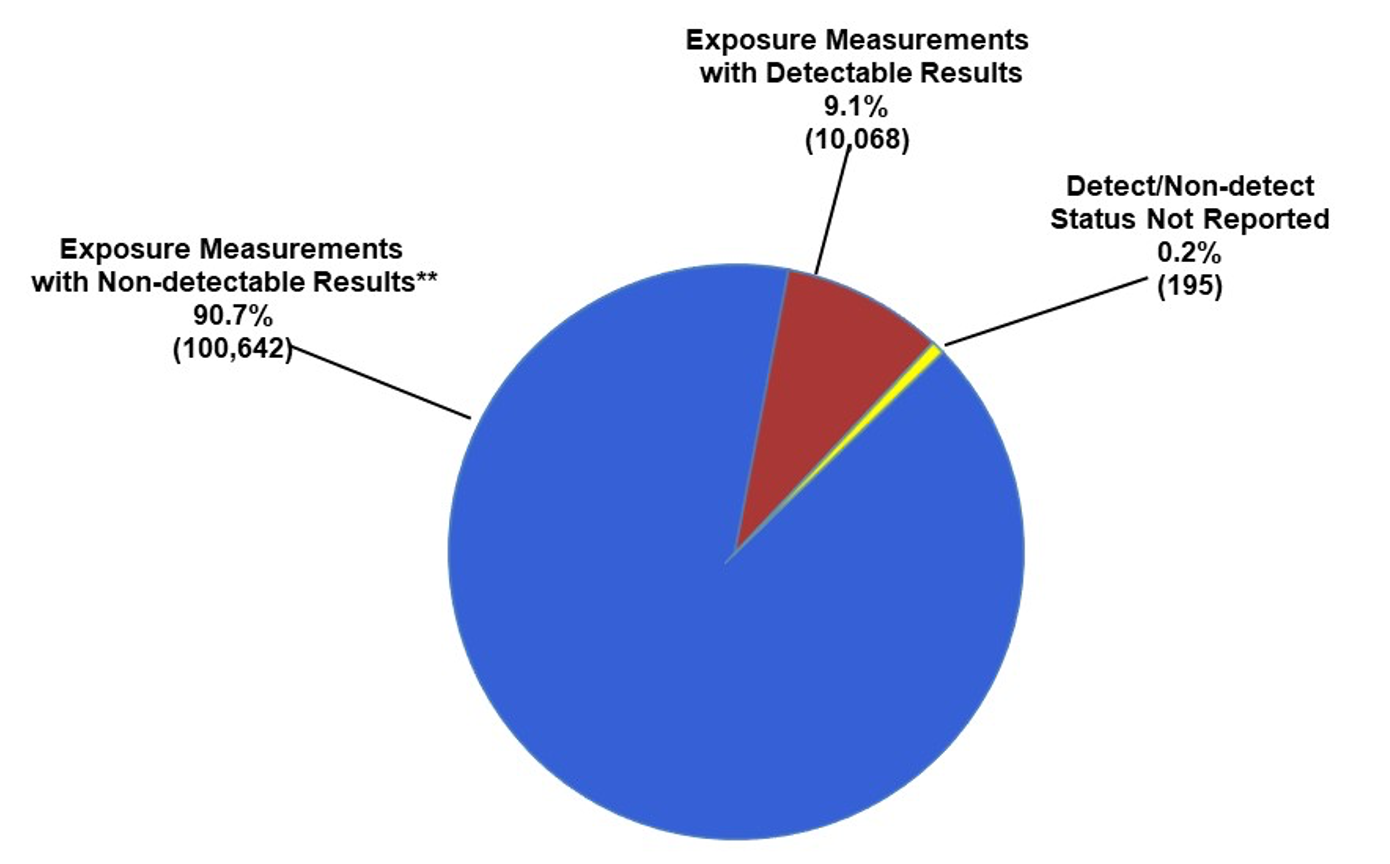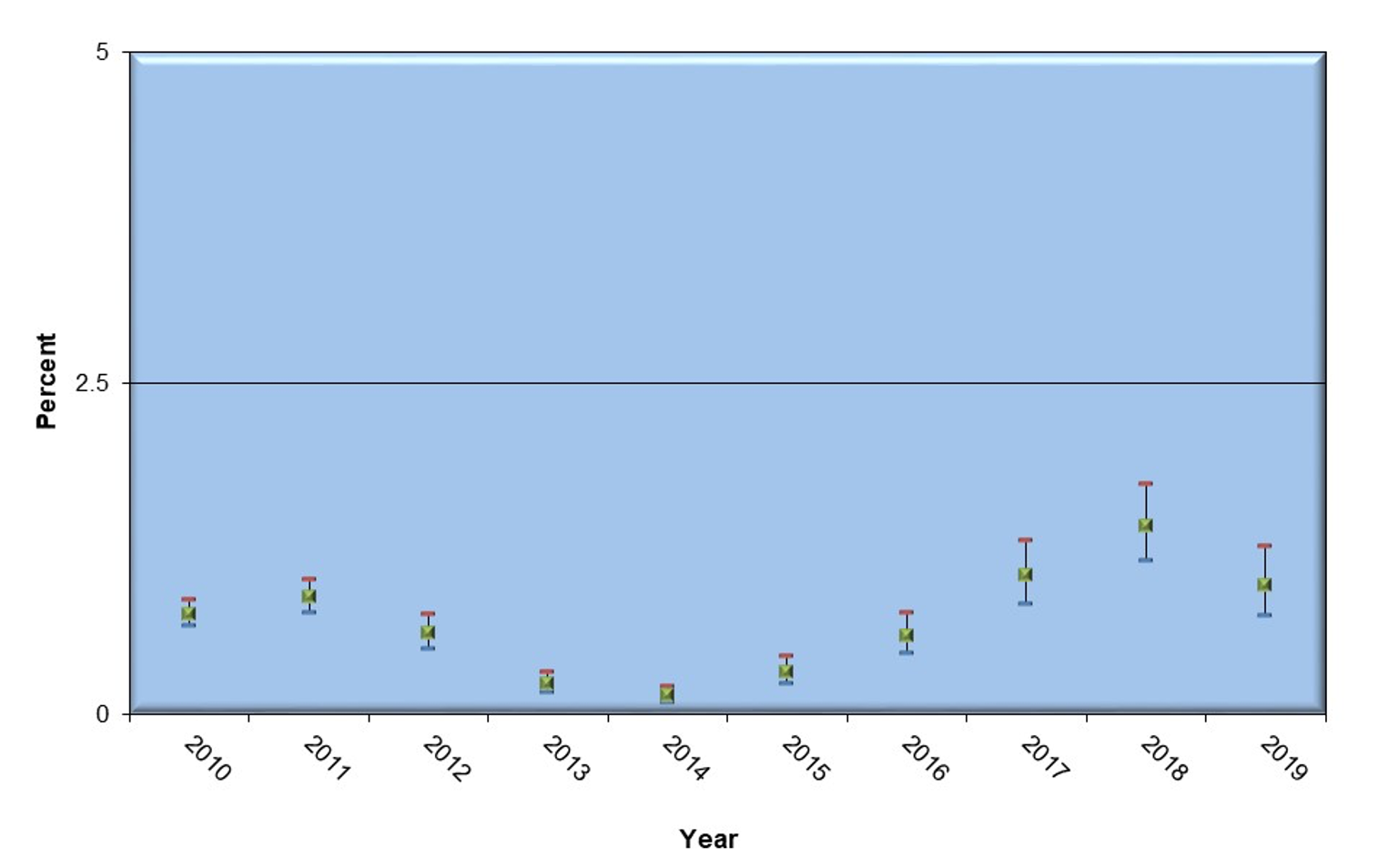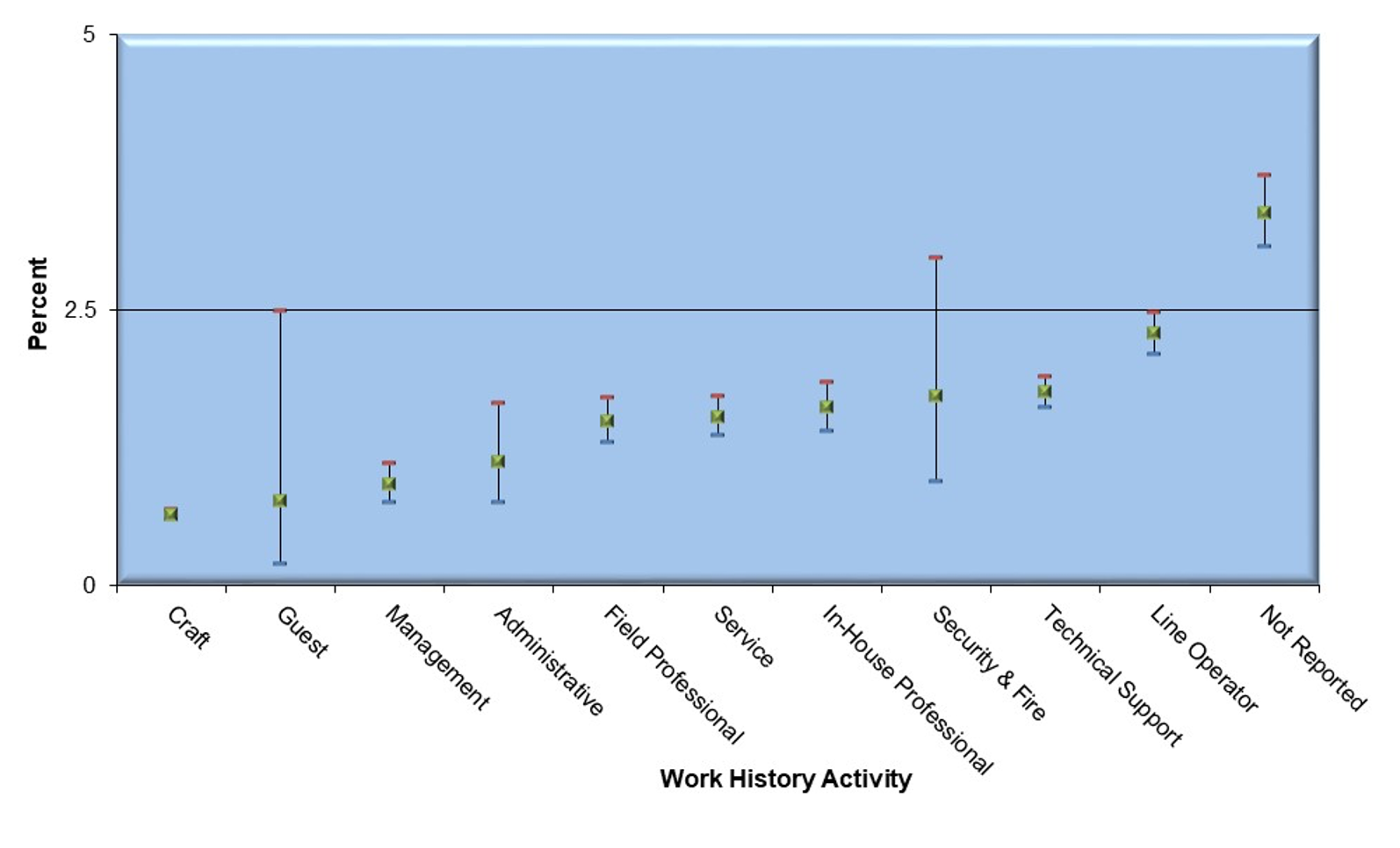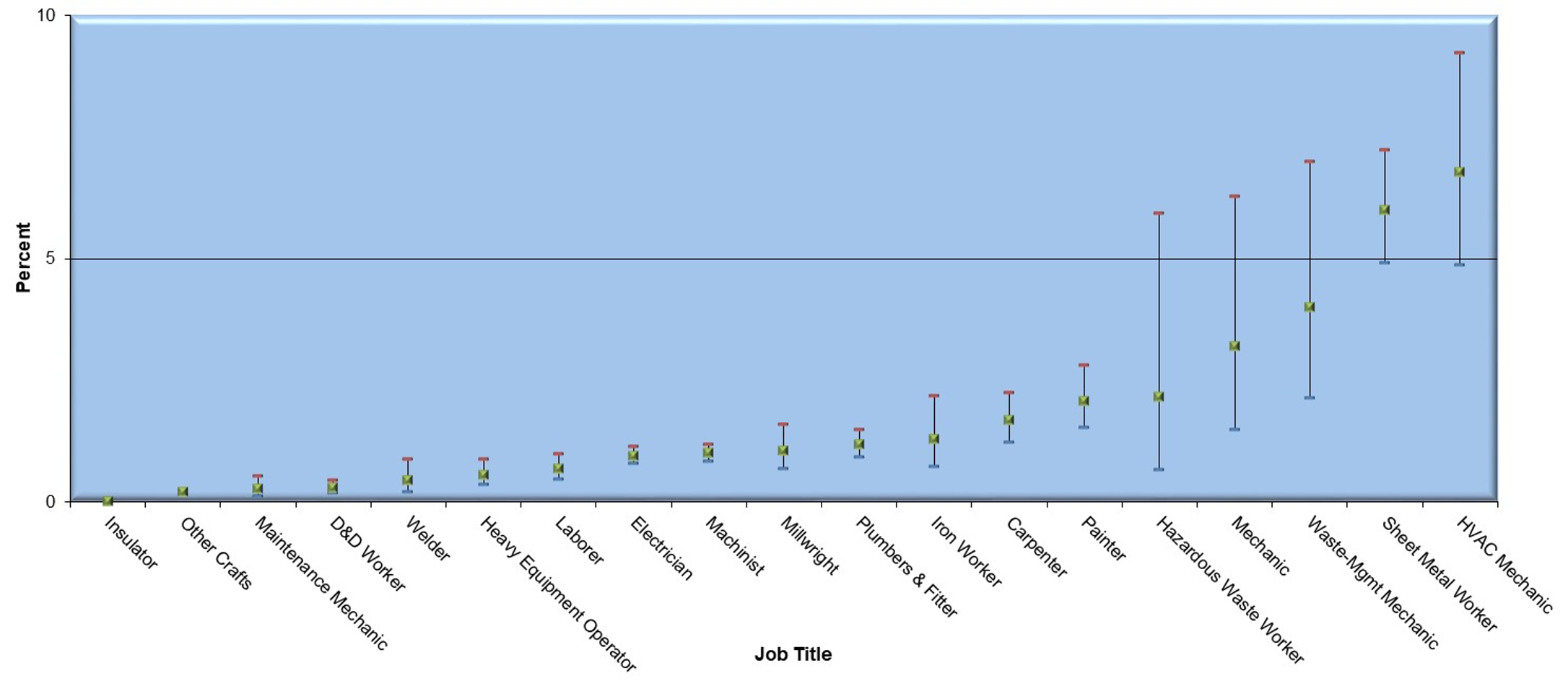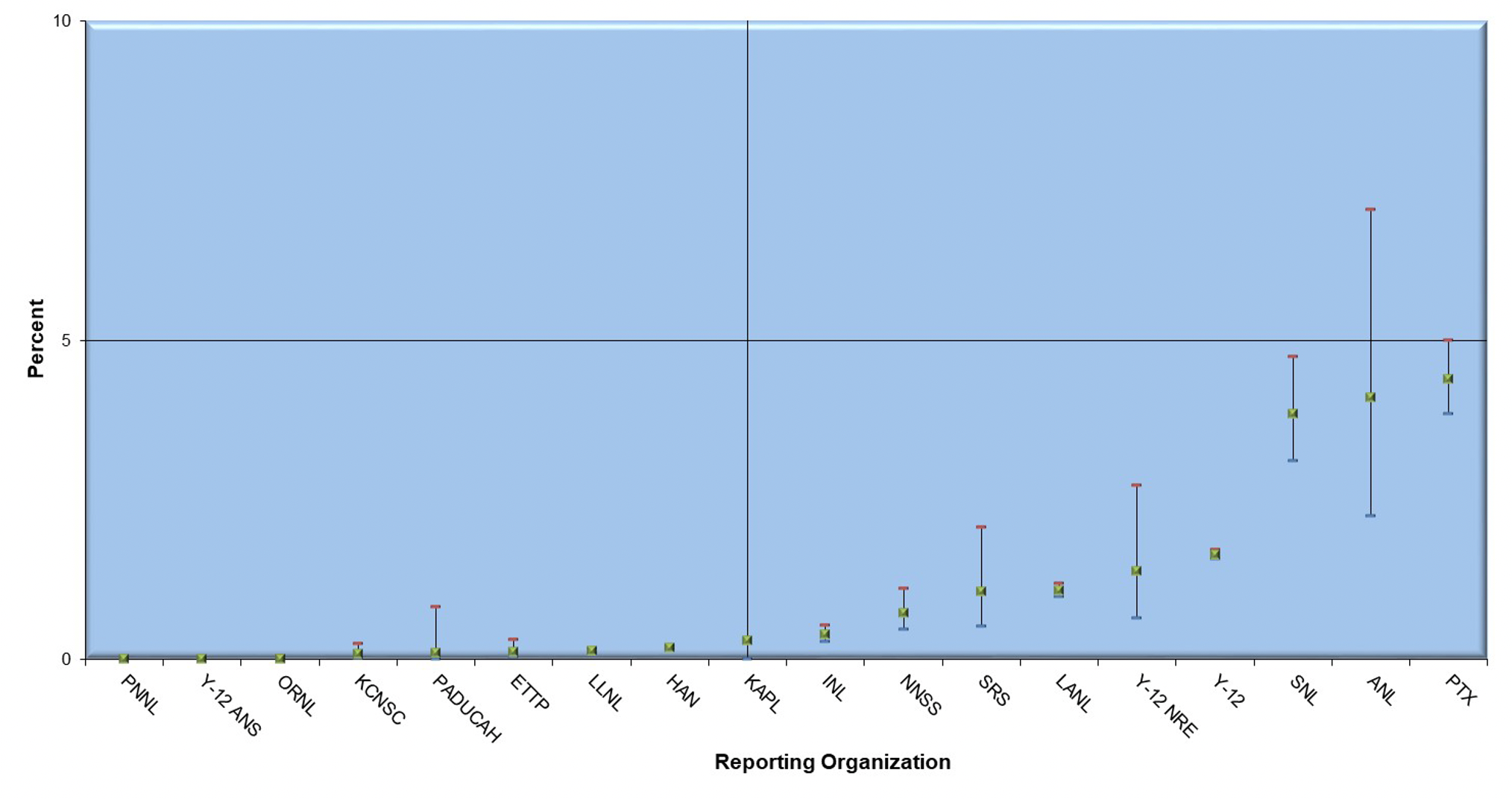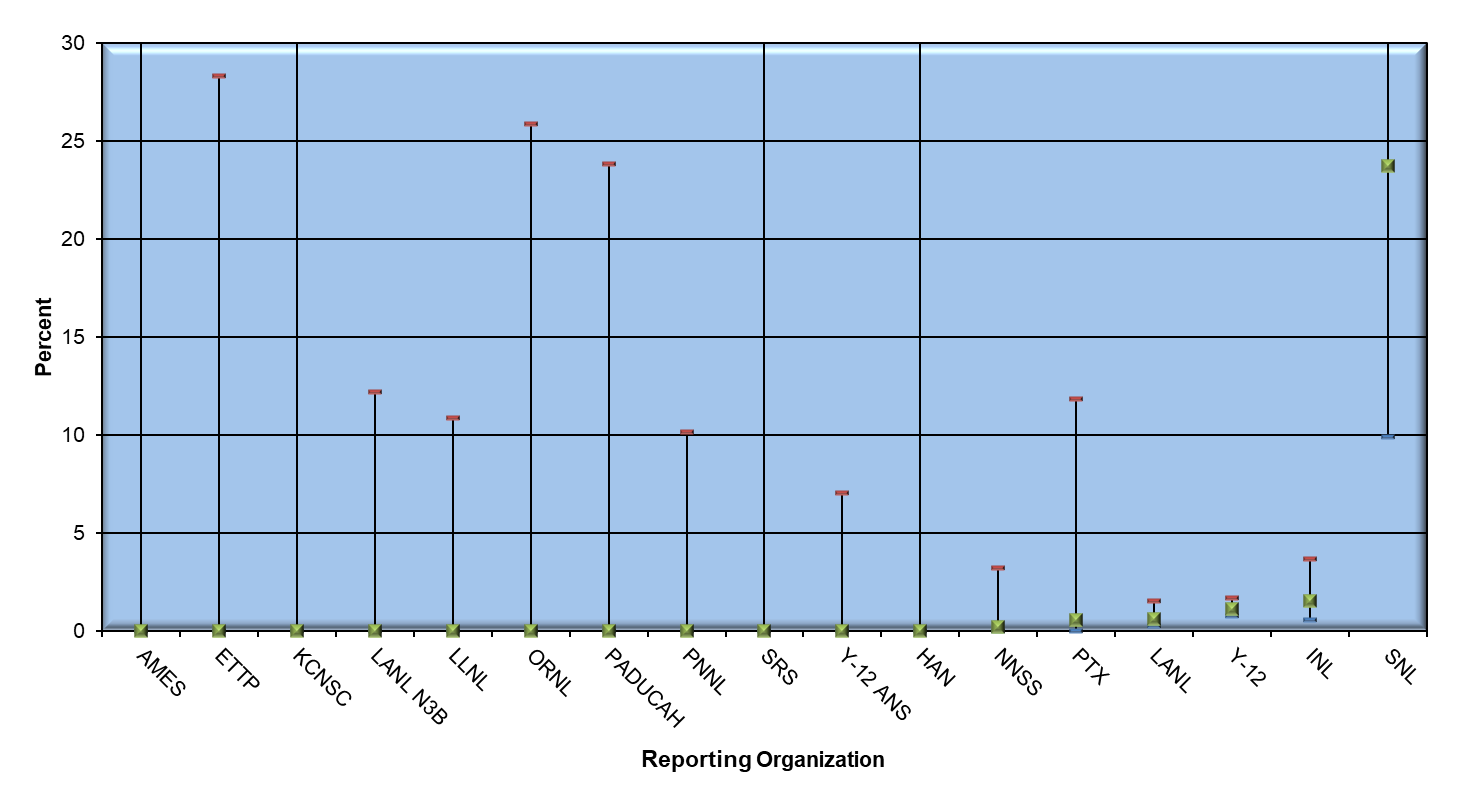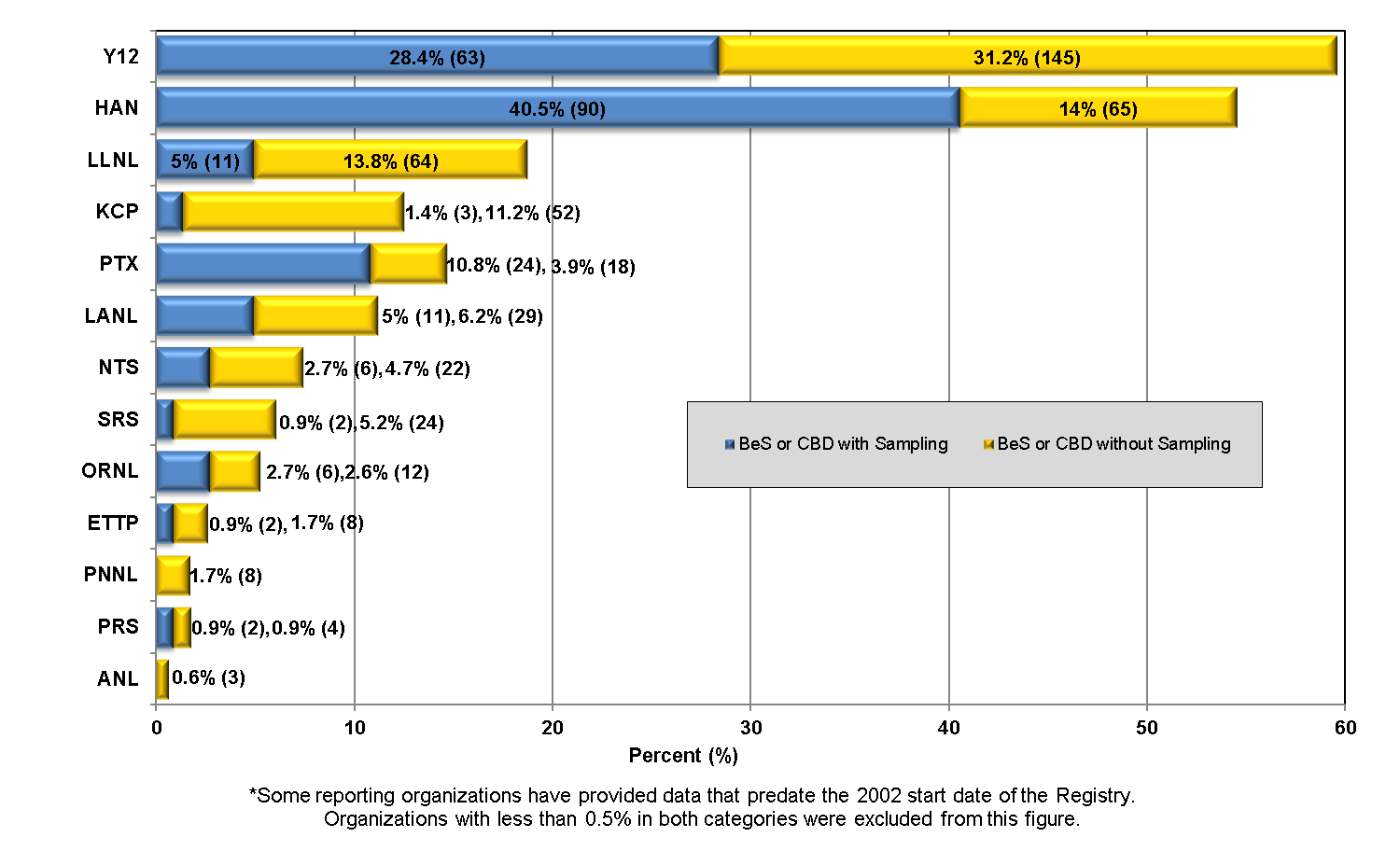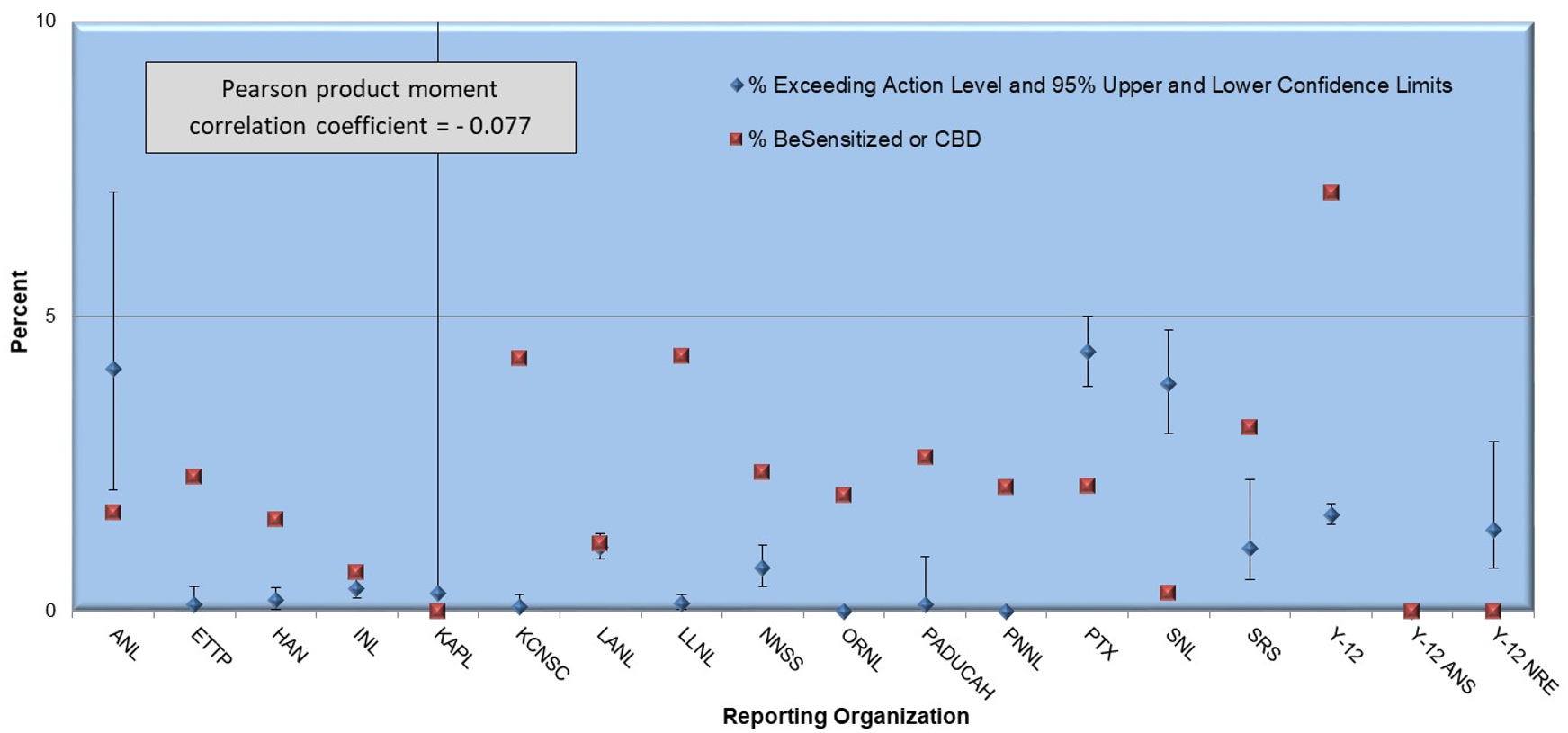Introduction
The U.S. Department of Energy (DOE) is responsible for protecting the health and safety of DOE employees, contractors, and subcontractors. The Office of the Associate Under Secretary for Environment, Health, Safety and Security (EHSS) provides the federal-level leadership and strategic vision necessary to establish clear expectations for health, safety, environment, and security programs. In support of this mission, the Office of Health and Safety (EHSS-10) collects, analyzes, and disseminates data and performance indicators, such as beryllium health and exposure information for individuals potentially at risk for chronic beryllium disease due to their work at DOE facilities.
The DOE Beryllium-Associated Worker Registry (BAWR) is a complex-wide internal program to help DOE conduct and improve its Chronic Beryllium Disease Prevention Program (CBDPP), the purpose of which is to protect workers from the adverse health effects of exposure to beryllium. The U.S. Code of Federal Regulations (CFR) Title 10, part 850 Chronic Beryllium Disease Prevention Program (10 CFR 850) requires DOE sites to inventory and assess beryllium exposure hazards and transmit all records generated as required by this rule to DOE. Established in 2002, the BAWR is the repository for these data and contains information from more than 30 DOE facility reporting organizations, both active and inactive. Data from the BAWR and the annual summary reports were included in the Federal Register on June 7, 2016, in support of proposed amendments to 10 CFR 850. These recent proposed changes to the rule, reflecting DOE’s goals to achieve aggressive reduction and minimization of worker exposures to airborne beryllium, will further strengthen the current CBDPP, worker protection programs, and reporting of affected workers.
Background
The Department of Energy and Department of Defense (DOD) have historically been some of the largest users of beryllium. Since the early 1940s, many thousands of workers at DOE and DOD plants or facilities have worked with beryllium and had the potential for exposure. These U.S. Departments have also been among the most involved in the study of beryllium and its possible health effects, and DOE took steps to initiate a comprehensive beryllium worker health program. Following years of aggressive data collection and analysis of beryllium activities, exposure measurements, and disease occurrence, a public notice of intent to establish a chronic beryllium disease prevention program was published in 1998 (63 FR 66940). Within the notice of intent, DOE requested comments, data, and any other relevant information from the public and industry for consideration in developing the beryllium worker health program. Following receipt and consideration of numerous comments and other relevant information, DOE published the final rule of 10 CFR part 850 Chronic Beryllium Disease Prevention Program (CBDPP) in 1999. DOE issued a comprehensive implementation guide (DOE G 440.1-7) to assist line managers in meeting responsibilities required by the CBDPP in 1997 and updated it in 2001 (DOE G 440.1-7a). In 2006, DOE published 10 CFR 851, a final rule establishing and implementing a formal worker safety and health program (WSHP) which also included some updating of the CBDPP. The WSHP, including the amendments to the CBDPP Rule, went into effect in 2007.



